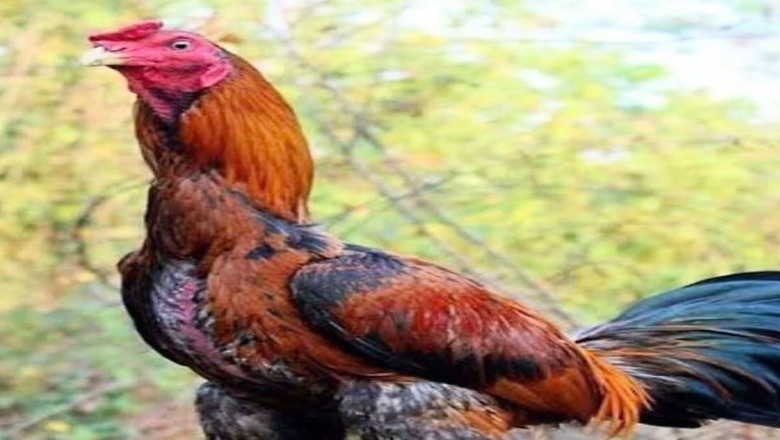
views
Considering the increasing demand for chickens and eggs in the markets, the poultry farming industry is expanding rapidly. People are making good profits by raising chickens and selling both eggs and chickens. In this scenario, there is a growing demand for improved breeds of chickens. One such special breed is the Asil chicken. It is renowned for its unique qualities and competes with popular breeds like Kadaknath.
The Asil chicken is quite different and special compared to other chickens. The male Asil chicken weighs up to 4-5 kg, while the female Asil chicken weighs up to 3-4 kg. This breed has more weight compared to other breeds, making it unique.
The physical structure of the Asil chicken is distinct from other chickens. Its beak is long and cylindrical. Its feathers can be black, red, or a mix of colours. Its long neck and strong, straight legs make it even more special. Its tail is also longer than other chickens. There are a total of 7 major varieties of Asil chickens – Noori (white), Yarkin (black and red), Haldi (golden red), Kager (black), Tikar (brown), Chitta (black and white silver) and Reza (white-red).
This chicken lays 60 to 70 eggs per year, which is lower compared to other breeds. However, due to the medicinal properties of Asil eggs and meat, its market price has increased significantly. In the market, Aseel eggs are sold for around Rs 100 and the price of Asil chickens ranges from Rs 2000 to Rs 2500.
Asil chicken eggs and meat have medicinal properties. They are in high demand during the winter season. According to veterinary officer Dr Indrajit Verma, consuming these eggs is very beneficial for the eyes. The meat and eggs are also used as medicine in cold climates. The Asil chicken is primarily found in Andhra Pradesh, Rajasthan, South Punjab, Uttar Pradesh and other states. It is famous for its fighting tendency and is also known as “Fighting Chicken” because it excels in chicken fights. The Asil chicken is renowned for its physical structure and medicinal qualities, making it an excellent choice in poultry farming.




















Comments
0 comment